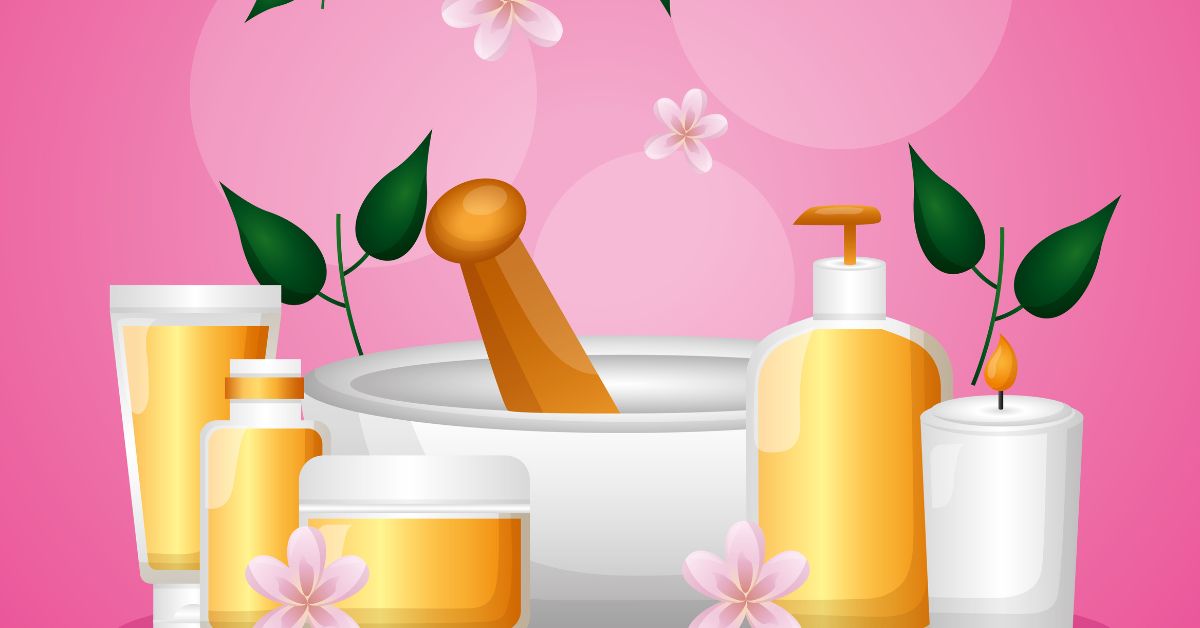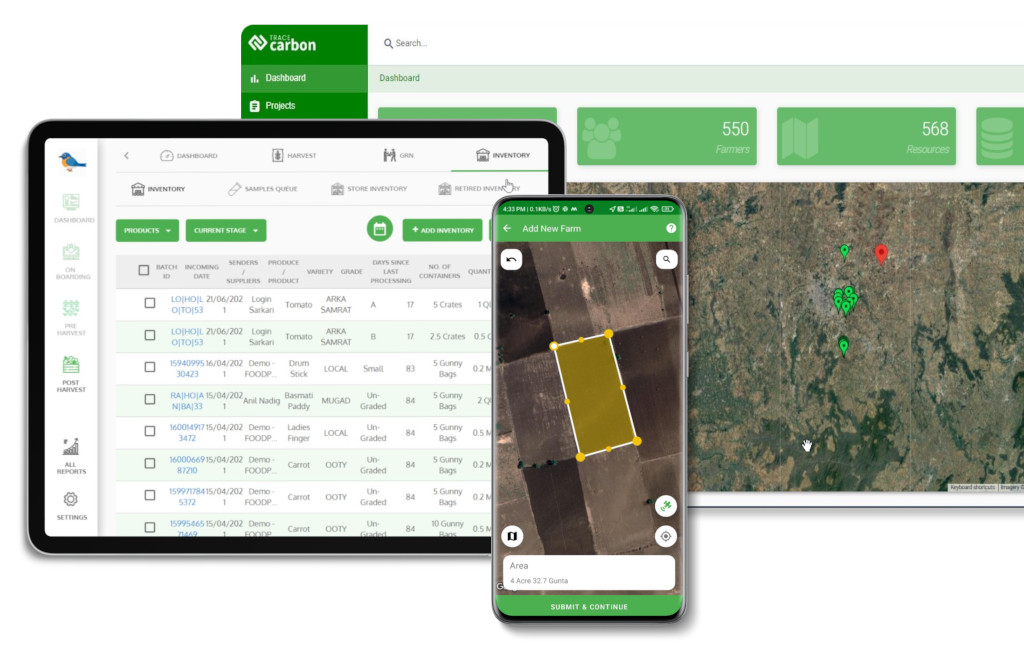Contact: +91 99725 24322 |
Menu
Menu
Quick summary: Learn how traceability from seed to scent ensures transparency, sustainability, and EU compliance in the floral supply chain. Discover how TraceX helps you trace every stem—farm to fragrance.

Transparency in the floral supply chain is crucial for enhancing sustainability and building consumer trust. By tracking the journey of flowers from farm to fragrance, consumers gain confidence in the ethical sourcing and sustainable practices behind the product. Transparency ensures that flowers are grown using eco-friendly methods, reducing environmental impact and promoting fair labor practices. It also helps companies comply with global sustainability standards, increasing their credibility. Ultimately, a transparent supply chain reinforces a brand’s commitment to sustainability, boosting consumer loyalty and making the brand more competitive in the market.
Imagine walking into a store to buy a beautiful bouquet of flowers, only to wonder: Where did they come from? Were they grown sustainably? Were the workers treated fairly? These are questions that more and more consumers are asking, as transparency in the floral supply chain becomes not just a nice-to-have, but a must-have.
The floral industry, like many others, is facing increasing pressure to address sustainability challenges — from chemical use and water consumption to carbon footprints and labor practices. With global supply chains often spanning continents, the need for transparency has never been more critical.
Transparency in the floral supply chain helps consumers and businesses alike answer these questions with confidence, ensuring that flowers are ethically sourced and sustainably grown. By tracing every step, from farm to vase, we can tackle these pressing challenges and build consumer trust in the process. The path to a more sustainable floral industry starts with transparency, and it’s time to embrace it.
Key Takeaways
See how a leading essential oils manufacturer ditched paperwork and delays by switching to mobile-based bulk GRN processing. Faster entries, real-time insights, and zero data loss—even in remote sourcing zones.
The fragrance market depends heavily on horticulture-grown flowers and botanicals for creating natural scents used in:

Transform Your Agribusiness with Digital Solutions
Unlock the power of digital transformation to enhance sustainability and streamline sustainable sourcing in your agribusiness. Learn how traceability tools, real-time data, and advanced technologies can help you meet global standards and drive sustainable growth.
Read our latest blogs on:
The floral supply chain is the journey a flower takes from the moment it’s planted to when it reaches a customer’s hands—as a bouquet, a perfume, or a processed product like essential oil.
It includes every step in the process:
Supply chain transparency refers to the clear, accurate, and accessible flow of information about the origins, processes, and practices that go into producing and delivering a product. In the floral industry, this transparency means knowing exactly where each flower comes from, how it was grown, and the journey it took before arriving at a store or in a consumer’s hands. Transparency ensures that all stakeholders, from growers and suppliers to consumers, have access to verifiable data that confirms the product’s authenticity, sustainability, and ethical sourcing.
The floral supply chain is often long and complex, involving multiple layers of suppliers, growers, and distributors, sometimes spanning several countries. This complexity can make it difficult to ensure that flowers are sourced ethically and sustainably. Transparency in this industry addresses this challenge by ensuring that every part of the supply chain is visible and trackable.

Embracing transparency in the floral supply chain isn’t just about meeting consumer demand or regulatory compliance — it’s about aligning with the growing sustainability movement and future-proofing the industry. As eco-conscious purchasing decisions become the norm, brands that prioritize transparency and sustainability will not only stand out but also secure long-term consumer loyalty and brand growth.
The journey of a flower from farm to fragrance is beautiful but broken.
Many businesses in the floral supply chain are chasing quality, compliance, and sustainability—but the infrastructure just hasn’t caught up.
If you’re an exporter, aggregator, or sustainability lead, you’re likely nodding already.
So, let’s talk about the real roadblocks standing between your flowers and full transparency—and how to overcome them.
One of the key challenges in the floral supply chain is the aggregation of flowers from multiple agents, including farmers, wholesalers, and distributors. Unlike other industries, where products may come from a centralized source, the floral industry often relies on a fragmented supply chain that involves multiple intermediaries across different regions. These intermediaries may not always follow the same sustainability standards or adhere to consistent documentation practices. This lack of uniformity creates challenges in ensuring that flowers from multiple sources are properly tracked and verified for quality and sustainability
Many small-scale flower growers still use pen and paper—or no records at all. Farm data lives in memory, not in systems. When a buyer asks “Where exactly was this harvested?”, most suppliers can’t answer with coordinates, harvest dates, or input logs.
Procurement officers often collect from multiple farms in a day—with no reliable way to tag or batch product origins. If flowers are blended, mislabelled, or misattributed, you lose plot-level traceability, and with it, sustainability claims.
There’s often no temperature logging or handling data between post-harvest and export. Even if the flower was grown right, the chain breaks in transit. Exporters can’t prove that conditions were maintained, which can result in shipment rejection—or worse, reduced shelf life for high-value blooms.
Without digital traceability, it’s easy for a dishonest supplier to label unverified flowers as “compliant” or “organic”—and hard to catch it. All it takes is one mislabelled batch to break trust with an EU buyer or fragrance house.
Compliance is often seen as “someone else’s job.” Growers may meet one set of rules; exporters assume all’s good—but no one verifies or standardizes it across the chain. Without a connected platform, compliance requirements for EU or UK markets can fall apart during audits.
In a supply chain where flowers often change hands, temperatures, and continents in a matter of days, most producers and exporters are still trying to answer basic—but business-critical—questions like:
“Where exactly did this flower come from?”
“Was it ethically grown?”
“Can we verify that this batch is certified, legal, and compliant?”
That’s the gap traceability fills. But to drive action, it needs to be simple, flexible, and made for the real world—not just the boardroom.
Show that their flowers were grown on legally used, deforestation-free, pesticide-monitored land.
Their intent: Access the EU, meet certification standards, and satisfy high-end buyers.
What traceability delivers:
Accurately record harvest volumes by farmer and plot to link payments, plan shipments, and avoid underreporting. Digitize procurement, reduce losses, and provide verifiable yield data for buyers and audits.
What traceability delivers
Procurement used to mean guesswork, paper slips, and gaps in payment records. With traceability, you get the full picture:
And because it’s digitally linked, it creates a chain of truth from plot to port—no more missing bags, over-reporting, or mismatched batch IDs.
Ensure traceability from multiple farms to one shipment without data loss. Streamline procurement, eliminate sourcing errors, and pass audits.
What traceability delivers:
Batch tagging isn’t bureaucracy—it’s brand insurance. One bad crate without traceability can sink a buyer relationship. With tagging, you prevent that fallout—before it blooms.
Get real-time data from farms—even without Wi-Fi or smartphones. Bridge the field-office gap, empower sourcing agents, and onboard farmers.
What traceability delivers:
Discover how one agri-exporter overcame offline limitations to achieve real-time farm visibility and traceability. If you’re working in remote regions or managing multiple growers, this case study is a must-read.
Be ready for export documentation, EU compliance, and buyer requests. Avoid last-minute scramble, shipment rejection, or “non-traceable” flags.
What traceability delivers:

Floral supply chains are complex, fast-moving, and globally dispersed. From smallholder farms to EU fragrance buyers, the journey of a flower involves multiple actors—and countless data gaps.
TraceX Traceability solutions solves these challenges by providing an end-to-end farm-to-market traceability platform powered by blockchain, ensuring data integrity, transparency, and trust at every stage.
Blockchain ensures this pre-harvest data is immutable and auditable, eliminating disputes and reducing fraud.

This is the initial capture of what’s been harvested—by whom, where, and how much.
In TraceX, this step allows field agents or farmers to digitally log:
This is where procurement actually happens—the harvested produce is collected, weighed, and paid for.
Field staff or procurement officers:
The system links this transaction directly to the harvest event, ensuring that no produce is sourced anonymously or unverified.
This step officially receives the purchased produce into your inventory or processing unit.
TraceX auto-generates a Goods Receipt Note (GRN) that includes:
In a world where buyers demand proof, not promises, transparency is no longer optional—it’s your competitive edge. From the moment a seed is planted to the final scent bottled or bouquet wrapped, TraceX helps you trace every step with trust, clarity, and blockchain-backed assurance. Whether you’re an exporter, aggregator, or a fragrance brand, now is the time to invest in traceability that’s as beautiful—and verifiable—as your flowers.
Discover how farm management solutions and blockchain-powered traceability can revolutionize your agricultural supply chain. From sustainable farming to optimized procurement, TraceX provides the tools you need to meet sustainability goals while ensuring transparency and efficiency.
Explore our blogs on:
It refers to tracking a flower’s journey from the point of cultivation (the seed) through harvest, processing, and export—right up to its end use in products like bouquets or perfumes.
Traceability helps floral businesses meet regulatory standards (like EUDR), ensure ethical sourcing, verify quality, and build trust with international buyers who demand proof of origin and sustainability.
TraceX digitizes farm mapping, harvest records, batch tagging, and export documentation—using blockchain to create tamper-proof, audit-ready data at every stage of the floral value chain.
